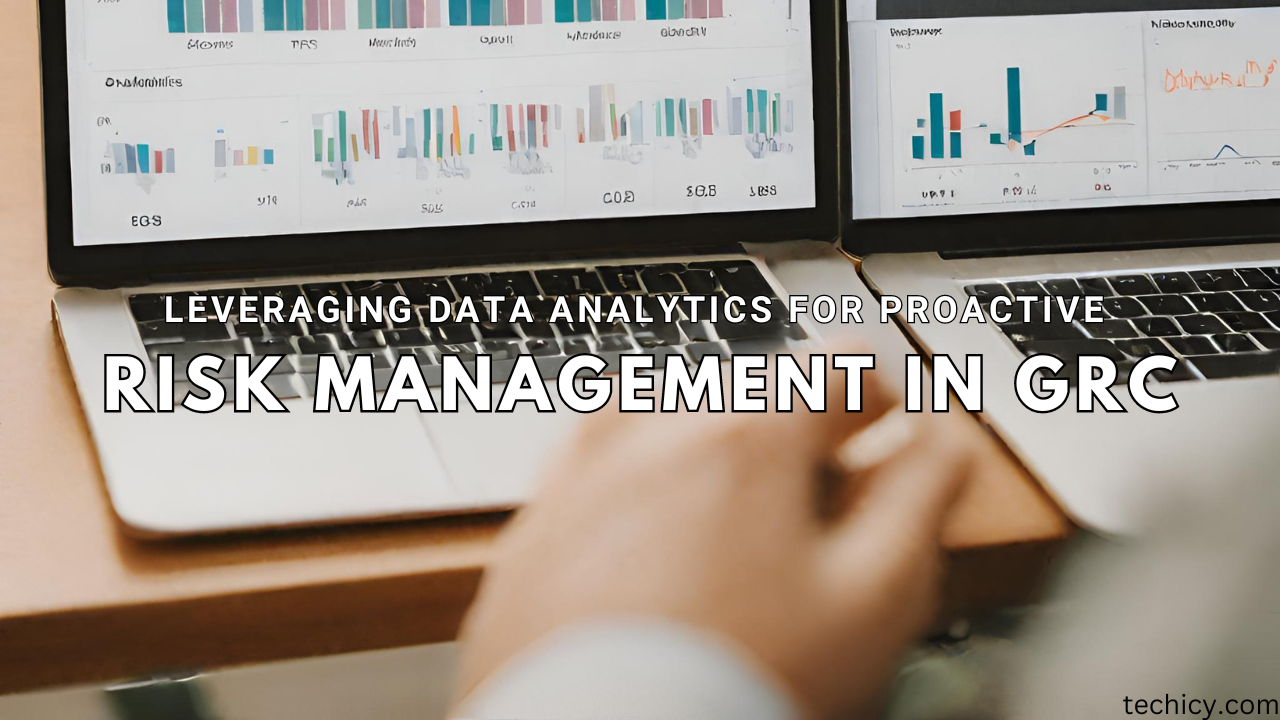Governance, Risk Management, and Compliance (GRC) is an integral part of modern business operations. It encompasses the strategies, processes, and technologies that organizations use to ensure they are in compliance with various regulations, effectively manage risks, and maintain good governance practices. In an era where data is the lifeblood of businesses, leveraging data analytics has become crucial for proactive risk management within the realm of GRC.
This article explores the intersection of data analytics and GRC, delving into how organizations can harness the power of data to identify, assess, and mitigate risks proactively. We’ll discuss the key components of this approach, the benefits it offers, and real-world examples of companies successfully implementing data analytics in their GRC processes.
Understanding Proactive Risk Management in GRC
Traditionally, risk management in GRC has been a reactive process, where organizations respond to incidents or issues after they have occurred. However, this approach is no longer sufficient in today’s fast-paced and interconnected business landscape. Proactive risk management, on the other hand, involves identifying potential risks and taking preemptive measures to mitigate them before they materialize into problems.
Data analytics plays a pivotal role in enabling proactive risk management within the GRC framework. By collecting, analyzing, and interpreting data from various sources, organizations can gain valuable insights into potential risks, predict future threats, and make informed decisions to reduce their impact.
The Key Components of Leveraging Data Analytics in GRC
To effectively leverage data analytics for proactive risk management in GRC, organizations need to focus on several key components:
1. Data Collection and Integration:
The first step is to gather data from diverse sources within the organization. This data may include financial records, operational data, customer feedback, employee information, and external data sources such as market trends and regulatory changes. Integration of these data sources is crucial to create a comprehensive view of the organization’s risk landscape.
2. Data Analysis and Modeling:
Once the data is collected and integrated, sophisticated analytics tools and techniques are used to analyze it. Descriptive analytics helps organizations understand historical trends and patterns, while predictive analytics uses this data to forecast potential risks. Machine learning models can identify anomalies and outliers that might indicate emerging threats.
3. Risk Assessment and Prioritization:
After data analysis, organizations can assess and prioritize risks based on their potential impact and likelihood of occurrence. This step involves assigning risk scores to different scenarios and events, allowing organizations to focus their resources on the most critical areas.
4. Continuous Monitoring:
Proactive risk management is an ongoing process. Continuous monitoring of key risk indicators is essential to detect any deviations from expected patterns and trigger timely responses. Real-time data analytics tools are invaluable for this purpose.
5. Scenario Planning:
Data analytics enables organizations to simulate different scenarios and evaluate their potential impact on the business. By running “what-if” analyses, companies can prepare contingency plans and make informed decisions to mitigate risks effectively.
The Benefits of Leveraging Data Analytics in GRC
Implementing data analytics in GRC offers several significant advantages:
1. Early Risk Detection:
Data analytics can identify potential risks at an early stage, allowing organizations to take proactive measures before risks escalate into major issues. This early detection can save resources and prevent reputational damage.
2. Improved Decision-Making:
Data-driven insights enable organizations to make informed decisions about risk management strategies. This leads to more effective risk mitigation and resource allocation.
3. Cost Reduction:
Proactive risk management can help reduce the financial impact of risks. By addressing potential issues before they become crises, organizations can avoid costly remediation efforts and legal fines.
4. Regulatory Compliance:
Data analytics can assist organizations in staying compliant with evolving regulations. By monitoring regulatory changes and assessing their impact, companies can adapt their GRC strategies accordingly.
5. Competitive Advantage:
Organizations that proactively manage risks are better positioned to seize opportunities and gain a competitive edge. Customers and stakeholders often prefer businesses that demonstrate strong risk management practices.
Real-World Examples of Data Analytics in GRC
Let’s examine how some real-world organizations have successfully leveraged data analytics for proactive risk management within their GRC processes:
1. Walmart:
Walmart uses advanced analytics to monitor and manage risks in its global supply chain. By analyzing data related to weather patterns, political instability, and economic factors, the retail giant can anticipate disruptions and optimize its logistics operations. This proactive approach minimizes inventory shortages and ensures product availability for customers.
2. JPMorgan Chase:
JPMorgan Chase employs machine learning algorithms to detect fraudulent activities and potential compliance violations. These algorithms analyze vast amounts of financial data in real-time, helping the bank identify suspicious transactions and ensure compliance with anti-money laundering (AML) regulations.
3. Siemens:
Siemens, a multinational industrial conglomerate, uses data analytics to assess risks associated with its projects worldwide. By analyzing project data, including budgets, timelines, and external factors, Siemens can identify potential issues early in the project lifecycle, enabling them to take corrective actions and avoid costly delays.
Challenges and Considerations
While the benefits of leveraging data analytics in GRC are substantial, organizations should also be aware of the challenges and considerations:
1. Data Quality:
Effective data analytics relies on high-quality data. Organizations must invest in data governance and data quality processes to ensure the accuracy and reliability of the data used for risk assessment.
2. Data Privacy and Security:
Handling sensitive data for risk analysis requires robust data security measures and compliance with data privacy regulations, such as GDPR and CCPA.
3. Talent and Technology:
Implementing data analytics in GRC necessitates skilled data analysts, data scientists, and the right technology infrastructure. Organizations must invest in training and technology to reap the full benefits.
4. Change Management:
Transitioning from a reactive to a proactive risk management approach may require cultural and organizational changes. Employees need to embrace data-driven decision-making as part of their daily routines.
Conclusion
In an era of increasing complexity and uncertainty, organizations cannot afford to rely solely on reactive risk management practices in the GRC domain. Leveraging data analytics for proactive risk management is not just a strategic advantage; it’s a necessity. By collecting, analyzing, and interpreting data, organizations can gain valuable insights into potential risks, make informed decisions, and mitigate threats before they escalate.
The key to success lies in effective data collection, integration, analysis, and continuous monitoring. Organizations that embrace this data-driven approach will not only enhance their risk management capabilities but also position themselves for sustainable growth and competitiveness in an ever-changing business landscape. As the digital age continues to evolve, data analytics in GRC will remain a critical tool for safeguarding organizations and ensuring their long-term success.
About Author
My name is Manpreet and I am the Content Manager at Scrut Automation, one of the leading risk observability and compliance automation SaaS platforms. I make a living creating content regarding cybersecurity and information security.
Manpreet can be reached online at manpreet@scrut.io and at our company website https://www.scrut.io/

